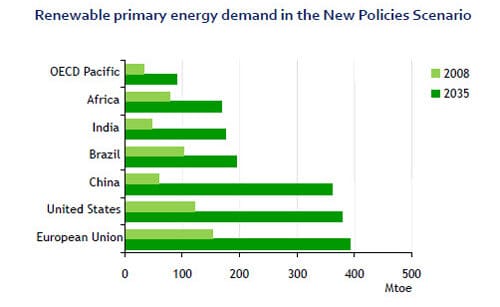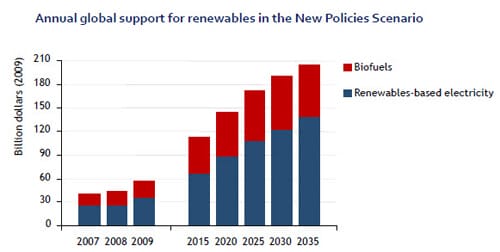As global energy consumption continues to rise, Emerson’s Alternative Energy industry leader, Alan Novak, shares his thoughts on the role of consistent tax policy in growing the renewable power portion of the overall energy supply.
The debate continues in the US over federal support for biofuels and renewable power generation technologies. While these two segments both fall under the “renewable” category, renewable power (principally wind and solar) presents a unique set of challenges to the existing electrical infrastructure. Unlike biofuels, which are stable and can be stored for later use, electricity is a relatively transient commodity.
Supply and demand on the electrical grid must be carefully matched and supplies which are variable (such as wind and solar) will remain difficult to integrate until methods of storing electrical energy on a large scale are developed. In addition, renewable power sources are generally located near advantageous “fuel” sources: large, sunny, arid locations (desert) for solar and breezy, open areas (mountain ranges, open ocean) for wind turbines. These ideal locations tend to be remote from major population centers and require new electrical transmission capability to be connected to the power grid.
These are not just issues for the US. Comments in a recent Reuter’s interview by Stephan Kohler, Director of the German Energy Agency (Deutsche Energie-Agentur or Dena) highlight the challenges in Germany:
Dena has now learned that two northern and the eastern German states alone plan on adding possibly 50,000 MW of onshore wind power and 8,000-10,000 MW of offshore by the year 2020…
“In other words, we stand to get 60,000 MW of power capacity where the power is not consumed,” Kohler said.
These regions are sparsely populated, unlike Germany’s south, the home of most energy-intensive industry.
“We could get an economic problem because we would have to switch off turbines in a storm because we can’t transport the power…that would be both costly and unintelligent,” he said.
Development of renewable generation in Germany (and elsewhere) is driven by subsidies, and its growth is likely to accelerate as Germany moves completely away from nuclear power. Without comparable investment in transmission infrastructure or significant investment in energy storage research, there may be no way to get the power where it’s needed when it’s needed.
Subsidies or tax credits will remain key elements for driving new technologies, be they next generation biofuels or renewable power generation, forward. As illustrated by several graphs in the International Energy Agency’s World Energy Outlook 2010, renewables will see substantial growth over the next twenty years but not without significant government support:
As global energy demand continues to increase in the coming decades, renewable energy sources will increasingly become an essential component of the overall energy mix. Without consistency in government policy, it will be difficult to attract the private capital necessary to get these plants or their supporting infrastructure built.






